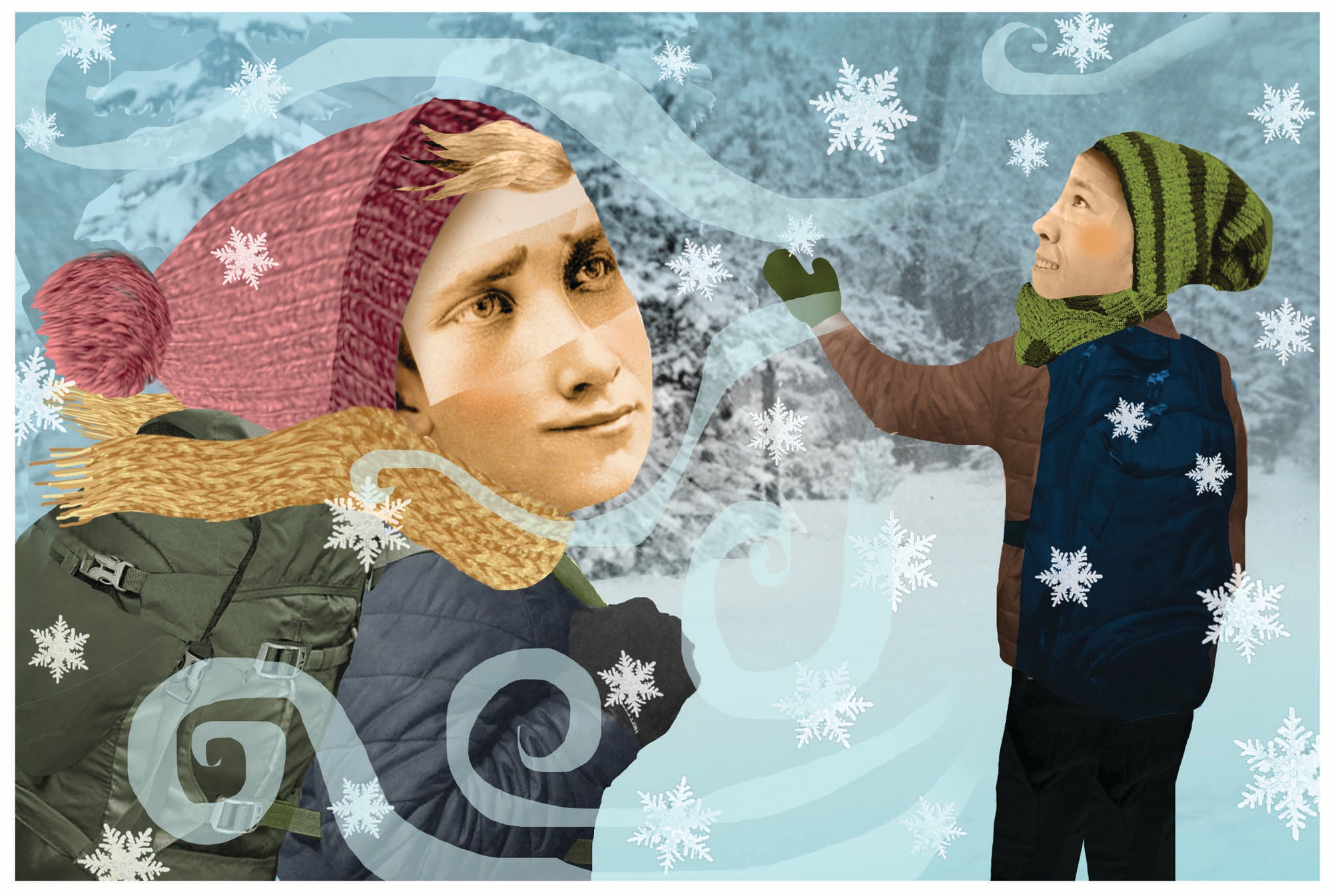Can a Warm-Weather Backpacker Learn to Love Winter?

'Isabelle Cardinal'
Even if the last spoonfuls of oats weren’t frozen solid, there still wouldn’t be enough. Worse: The coffee was already icing over, my toes and nose were numb, and was it snowing inside the tent? So. Stinking. Cold.
We were cruxing all of a half-mile down Red Creek Trail in West Virginia’s Dolly Sods Wilderness because we were determined to get outside in every season. As adventure recreation majors at nearby Ohio University, my buddy Matt and I had spent the fall and spring paddling whitewater, navigating lakeshores to find dreamy campsites, backpacking state forests, and sleeping in debris huts. For credit! When winter came, we focused on indoor learning that included expedition planning, leisure theory (yes, that’s a thing), and drinking dark beer. While I didn’t love the idea of backpacking in the deep freeze, I loved it more than a season spent cabin-bound. So Matt and I had devised a radical idea: Instead of biding our time waiting for a warm(ish) spell, we’d embrace the season and march into the worst it could dish out. We hoped this would be a shot of adrenaline to an otherwise drab winter spent indoors. We dubbed it Expedition Misery.
The tenets of Expedition Misery were simple: Pick a weekend with the gnarliest forecast that month (winter storm warnings being the gold standard), assemble a menu, pack gear, and go. We’d prepared by reading winter camping books (and, yep, issues of BACKPACKER) and soliciting tips from grad students whose Gore-Tex suits from The North Face we coveted (but couldn’t borrow). We targeted a weekend in February with subzero temps and a foot of snow in the forecast. Then Matt and I had loaded up my two-wheel drive Chevy S-10 and tiptoed down the highway.
After a late arrival at the trailhead, we’d donned snowshoes we didn’t really need and waddled down the trail into a quickly fading dusk. Neither of us had puffy jackets (too pricey), just layers of fleece. Our tent was a three-season shelter. Our bags, 20°F synthetics. We worked with what we had.
I gulped the last of the iced coffee, and we reluctantly broke camp. We had circumnavigated the Sods a few times in fall and spring, knew the area well, and had a rough plan to cross Red Creek and see how far up Big Stone Coal Trail we’d get. We stumbled over rocks in our snowshoes but made a decent pace on the rare stretch of smooth, snow-covered trail. Making easier progress allowed us to look around and discover a forest a world away from the one we knew: different birds, deep silence, snow draping all of it in a dream state. We soon learned that the simple act of movement warms the body enough to make barely-double digit temps bearable. We also learned that when we took breaks, we froze. As the day wore on, we took advantage of gaps in the wind and weather to warm up in the sun. That night, feeling somewhat bolstered by a day of not bailing, we made camp in a nook between the forest and the creek.
An intense cold descended as the day’s light faded, and we made a fire. My toes were still numb (in fact, one of them would be numb for the next 4 months), and the flames did little to warm us. We slogged out the next day feeling unheroic yet vaguely proud, chucked our packs in the truck bed, and sat in the cab blasting the heater all the way to the cheeseburger joint.
Expedition Misery wasn’t epic. We hiked roughly 7 miles with highs in the teens, ate cold food, and peered into the edges of hypothermia. We didn’t thrive. Yet, despite the suffering, or perhaps because of it, we were hooked: We saved for better gear and learned tricks like tucking your dehydrated food bag in your jacket to warm yourself and insulate your chili-mac. And we put our next outing on the calendar. The following year, we completed a 26-mile Dolly Sods traverse in whiteout conditions with hot coffee, ample food, and toes that warmed back up each night.
Expedition Misery became an ethos for me, guiding my approach to trips in the Adirondacks, the Whites, West Virginia’s Roaring Plains, and Colorado’s Front Range, often solo (a perennial challenge to winter camping is finding partners).
Exploring the fringe of my comfort zone delivered a new perspective on adventure. No matter what struggle I faced in my day-to-day, I could always think about that trip and know that I’d seen worse. Pushing my limits each winter has become a yearly tradition—and while I still call it Expedition Misery, often it’s anything but.
The Verdict: Pass
Winter camping shouldn’t be a one-and-done pursuit. Any trip that gets you psyched up for the next one is a win—and will make your backpacking world a bigger place.
Tips for Winter Backpacking Beginners
1. Dial down your mileage.
With variable conditions, you will move slower than on dry trail. Choose an out-and-back with ample camping options to allow for an unknown pace. Or, set camp near a trail junction and explore with a daypack. Target no more than 5 miles per day for your first trip.
2. Manage warmth.
It’s easier to conserve heat than create it. Keep your puffy accessible to throw on at every break. Boil tea or cocoa and keep it in a thermos to sip throughout the day. If you have an insulated bottle cozy, slide a bar or two inside to keep them pliable, if not delightfully gooey.
3. Find your way.
Just finding marked trails in heavy snowpack can be a challenge. What you think is a trail could be a creekbed or nothing at all. For your first trip, it’s wise to choose an area you’ve been to before to ensure some familiarity. And always pack a map and compass or GPS.